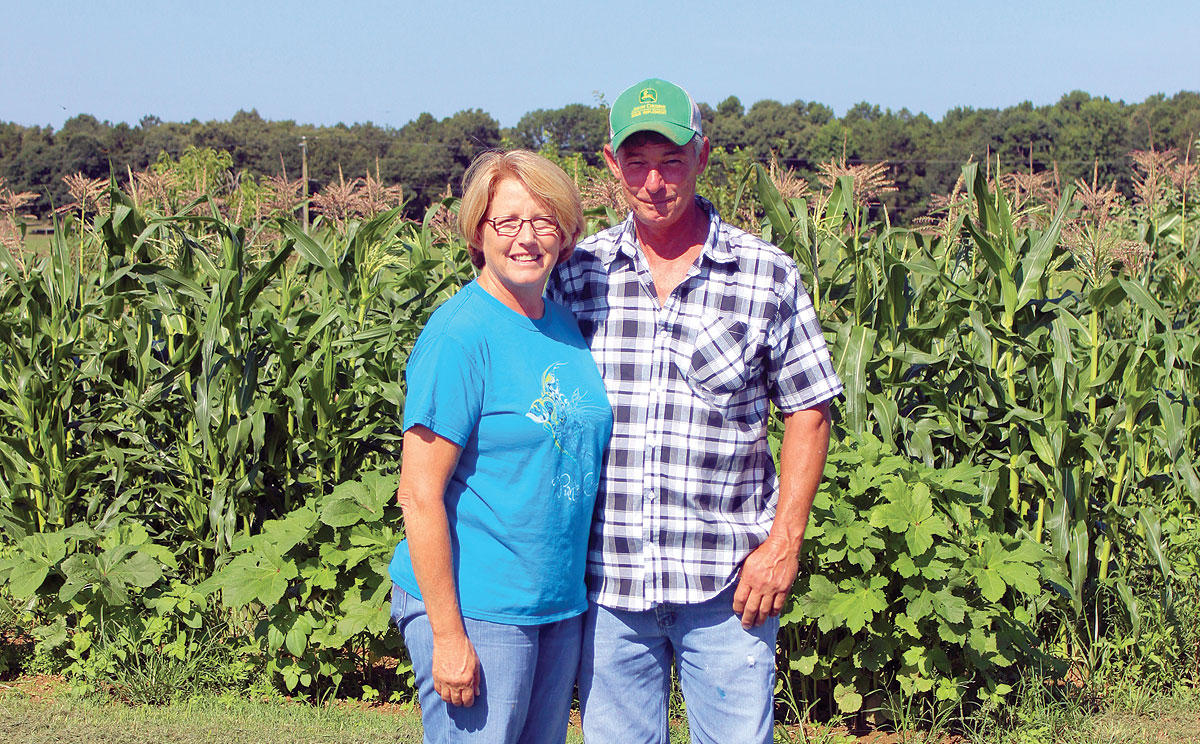
The youngest of six children, L.C. Ratchford is perpetuating the tradition of his father Odas Ratchford, who started the farm after he returned from World War II in late 1945. The family operation evolved and passed eventually to L.C., when his dad passed away in 1988.
“Dad and Mom first started with cattle, then strawberries, tomatoes and hogs. What makes the operation unique now is that this farm involves four generations and still covers such a variety of agricultural aspects. It’s not your conventional cattle farm, like you see so often in this part of the state. Last year we put in some strawberries and an acre of blueberries.”
The original home place covered 320 acres, then L.C. bought several tracts of adjoining property. The Ratchford Farm now covers 500 acres, with 200 acres in pasture, Clover, Fescue, Orchard Grass, Bermuda and Johnson grass. He runs 60 cow/calf pairs, Angus and Angus-cross and has three Angus bulls. Madge, L.C.'s mother, is very active at the farm, doing a lot of work around the place.
“From the time Odas and I married, I worked on this farm with my husband,” Madge said. “I’ve tied out hay behind a peckerwood hay baler. Back then we raised just about everything we ate.”
Madge was 83-years-young in December 2008, and one day in May 2009 she picked 24 quarts of strawberries. Most Saturday mornings she prepares a country breakfast and anyone working that weekend shows up to eat and then work livestock. Some of the cattle on the farm now are descendents of the bloodline of cattle Odas and Madge had.
Growing up, all the family worked on the farm, picking strawberries, picking tomatoes or working the garden. They all agreed that looking back, although they didn’t like it at the time, the work was probably one of the best things they could have done, showing them how to be more self-sufficient.
“L.C. is the one who never got away from farm life,” Madge said. “The other children have jobs and help here on weekends and in spring and summer, but L.C. is here year-round.”
In 1984 L.C. graduated from Marshall High School and enrolled in welding classes at North Arkansas Community College in Harrison, Ark, becoming a welder and blueprint reader by trade.
“Dad encouraged me to learn welding,” he said. “He told me if I didn’t use the trade professionally, the skills would come in handy on the farm. As things turned out, I’ve welded miles of steel fence around this place.”
Always eager to diversify, L.C. purchased his first seven head of buffalo in 1999. He kept their offspring and has an ever-increasing herd, in addition to his commercial cattle. Buffalo will eat the same types of grains, grasses and hay as cattle, but also weeds and brush that cattle don’t like. The demand for buffalo meat has increased, primarily because consumers want leaner meat than beef or pork. Raising buffalo has changed from a novelty enterprise to a profitable one, he explained, as his dusty pick-up lurched down a rough-cleared trail parallel to a seven-foot-tall, steel fence marking the perimeter of his farm.
“I do very little clear cutting,” he said. “Because my parents laid the groundwork, and my siblings have helped throughout the years, this farm became successful. These hills and valleys with pure, free-flowing streams where our animals drink, this is home. I’ve been other places, worked other jobs, but this is where I want to be.”
The honor of 2009 Searcy County Farm Family of the year went to L.C. Ratchford, his mother Madge, sisters Janice Jones, Delora Barnett, Rhonda Brock, Shelia Ratchford, brother Wayne Ratchford and his great-niece Lacey Tilley. Built around the state’s agriculture, the Arkansas Farm Family program began in 1947, and continues to recognize the growing importance of farm families and their benefit in community development.
“I’m honored that we’ve been awarded a Farm Family Award,” L.C. said.







